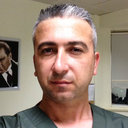Symptomatic subdural hygroma and temporal lobe edema after translabyrinthine removal of acoustic neuroma.
کلید واژه ها
خلاصه
The translabyrinthine approach is familiar to most neurosurgeons and neuro-otologists and is frequently used to remove acoustic neuromas. Some of the complications associated with this surgery include cerebrospinal fluid (CSF) leaks, meningitis, and rarely fat graft prolapse. The authors report a 60-year-old woman who underwent a translabyrinthine approach and microsurgical resection of a right-sided 1-cm acoustic neuroma. Initially, she was discharged home after an uneventful postoperative course. Four days later, she sought treatment in the emergency room complaining of headaches, dizziness, and lethargy. A computed tomographic (CT) scan showed a large right-sided subdural hygroma and right temporal lobe edema. The patient underwent burr hole evacuation of the collection and placement of a subdural drain, after which the edema in the temporal lobe and hygroma resolved. We speculate that the underlying mechanism was the result of inadvertant damage to the venous drainage and an arachnoid tear that was not appreciated during surgery. Neurosurgeons and neuro-otogists should be aware of this unusual complication of translabyrinthine surgery and its possible underlying mechanisms.


